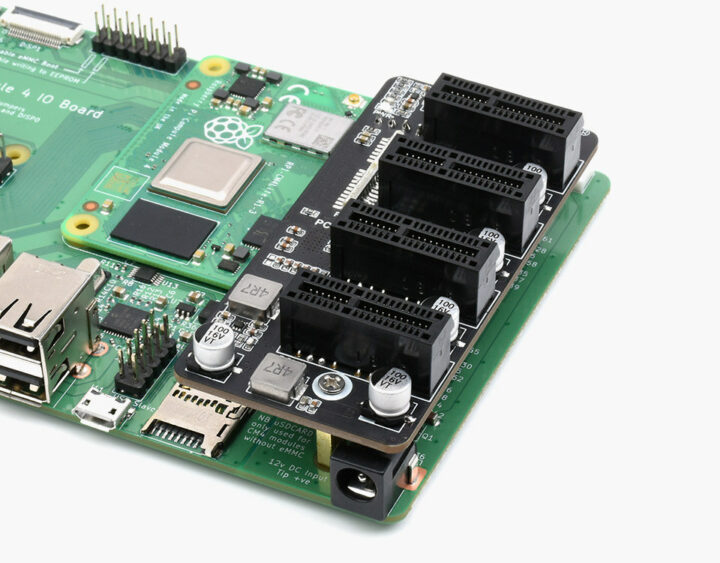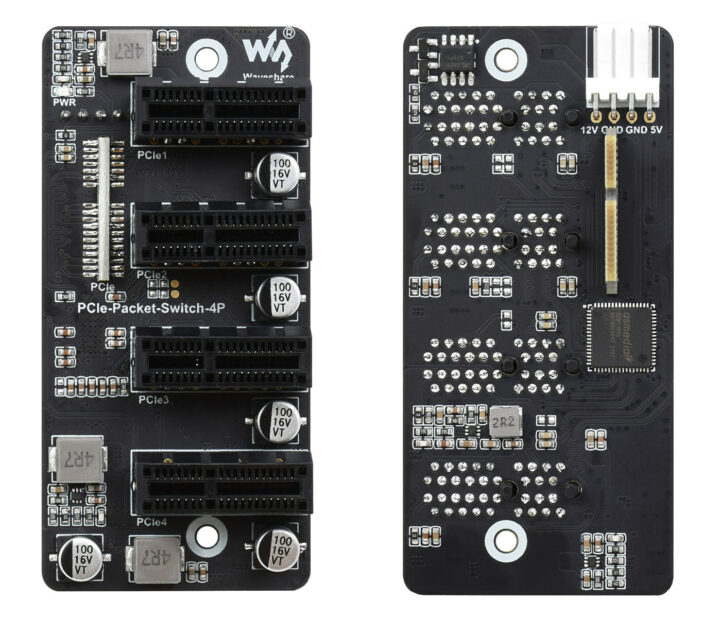The 1-lane PCIe Gen 2 interface in Broadcom BCM2711 processor is exposed in Raspberry Pi CM4, and most carrier boards are exploiting the interface including the official Raspberry Pi Compute Module IO carrier board.
But if you ever wanted to connect multiple PCIe cards to the CM4 IO board, Waveshare has got you covered with the PCIe-Packet-Switch-4P that provides four PCIe x1 slots through an ASMedia ASM1184e PCIe switch.
PCIe-Packet-Switch-4P expansion board specifications:
- Compatible with Raspberry Pi Compute module 4 IO board
- 4x PCIe Gen 2 x1 expansion slots, compatible with PCIe Gen 1 x1
- ASM1184e PCIe switch taking 1x PCIe x1 Gen2 upstream port to 4x PCIe x1 Gen2 downstream ports; no driver required, plug and play
- Power Supply
- 12V via PCIe interface or
- 12V via DC jack (or even 5V see warnings below)
- Dimensions – 82 x 39 mm
There are some interesting warnings in the Chinese wiki:
- “The speed limit is 500Mbps. No matter how it is extended, the speed will not exceed this limit at the same time”. (CNXSoft: That’s really odd as 1-lane PCIe Gen 2 should be around 5 Gbps, so I’d assume it’s a mistake until proven otherwise)
- “The module is powered by 12V. When there is no way to provide a 12V power supply, it can also use a 5V power supply”
- “When using a 5V power supply, the power will flow back to the 12V of PCIe. It is necessary to ensure that it will not affect the normal operation of the motherboard before using 5V power supply”
- “The maximum output current of each PCIe interface 3.3V power supply must be less than 1.5A”
Note that Waveshare will typically provide English documentation, but it’s not available just yet.
PCIe-Packet-Switch-4P is sold in China for 144 RMB, or about $23. Again, I’d expect the board to show up on Waveshare English shop in the next few days or weeks.
Via Will whang

Jean-Luc started CNX Software in 2010 as a part-time endeavor, before quitting his job as a software engineering manager, and starting to write daily news, and reviews full time later in 2011.
Support CNX Software! Donate via cryptocurrencies, become a Patron on Patreon, or purchase goods on Amazon or Aliexpress






